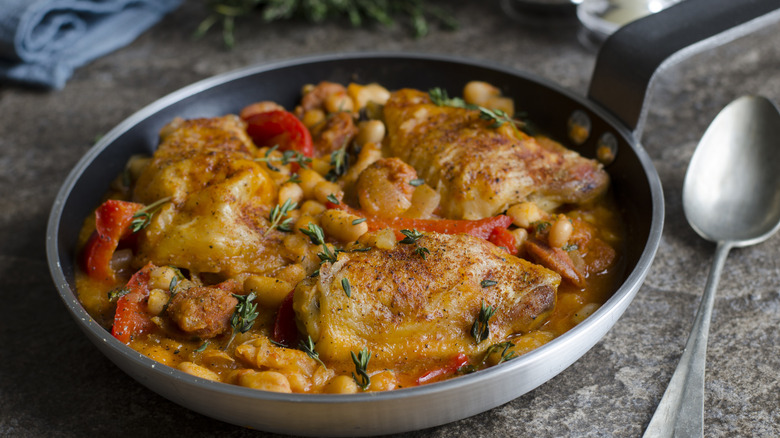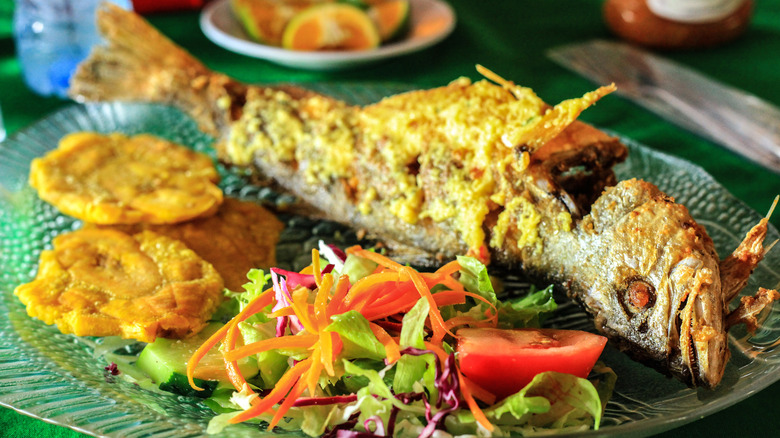How Puerto Rican Adobo Differs From The Spanish Variety
If you've ever eaten more than one flavorful dish that was called adobo and you felt confused, you are not alone. It turns out there is more than one kind of adobo, so if you've only tried one preparation, prepare for your mind to be expanded.
According to Bon Appétit, the word adobo comes from the verb, adobar, which is Spanish for "to marinade." The term adobo applies to different types of dishes from Spanish-speaking countries all over the world, but the catch is they're all different. From Spain to Mexico, to Puerto Rico and even non-Spanish speaking places like the Philippines, adobo dishes can be found, much to the delight of food lovers. Let's focus in on Spanish adobo versus Puerto Rican adobo. Read on to learn more about what separates these two preparations for food, what makes them alike, as well as how you can incorporate these techniques into your own recipes.
Spanish Adobo
To put it simply, as Food & Wine notes, Spanish adobo is a protein that has been marinated for a long time. They note that the roots of Spain's adobo came from a desire to preserve meats during prehistoric times when curing was the only way to go. The Spanish used vinegar with spices and aromatics to preserve their meats. Food & Wine notes that this process was not unique to the Spanish, but they were the ones who deemed it "adobo." Bon Appétit explains that these vinegar marinades also incorporated olive oil and were needed in the coastal areas of the country where humidity led to the spoiling of meat more quickly than in dryer, more arid climates.
Food & Wine also notes that today you'll find adobo marinades that incorporate wine, garlic and bay leaves. Unlike a Mexican adobo which is mostly chile-based, Spain's version of the marinade focuses more on herbs and aromatics to flavor proteins like meat and seafood. These marinates can be left on for up to two days (per Food & Wine.) As Spain began to colonize the world, Spanish cuisine's influence came along with them, and that influence traveled over the sea to the Caribbean islands.
Puerto Rican Adobo
After Spanish colonization in the 1500's, Puerto Rico was influenced by their cuisine and cooking techniques. But in Puerto Rico, adobo refers not to a marinade but to a special spice blend. Food & Wine notes that back in the day, being an island community meant that getting fresh herbs and aromatics like garlic was more difficult than being in a mainland country like Spain. They explain that Puerto Rican and Caribbean adobo relies on dried spice blends like, garlic powder, cumin, paprika, onion powder and turmeric. Today, an adobo spice blend is used commonly in Puerto Rican cuisine, notes Food & Wine. You might also find it blended with fruit juice or vinegar to marinade foods, similar to the Spanish adobo.
Bon Appétit explains that with Puerto Rican cuisine, the protein in question will dictate what kind of adobo blend is used. For tougher proteins like pork, a vinegar and garlic-forward marinate might be preferred, but with a more delicate protein like fish, a citrus-forward marinade with less garlic and onion works better. No matter what kind of adobo you're experimenting with, or ordering in a restaurant, you can rest assured that you're in for a flavorful and aromatic treat.


